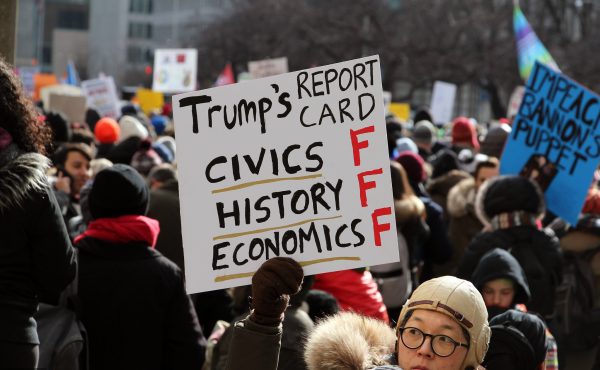• Lookouts missed at blind spot [ Toronto Star ]
• Let panel do its job in fixing waterfront [ Toronto Star ]
• ‘Every tree that survives is a miracle’ [ Toronto Star ]
• TVs on GO trains to air news, weather [ Toronto Star ]
• Derailed train spills acid into Ontario river [ cbc ]
• River turns to acid as train derails [ Globe and Mail ]
• Apiarists buzzing about soaring rates of honeybee deaths [ Globe and Mail ]
• Study links zero tolerance, blacks’ homelessness [ Globe and Mail ]
• When the roads are full, empty rhetoric’s no help [ Globe and Mail ]
• Green party might not run in all ridings [ National Post ]
• Hating Toronto: at a theatre near you [ National Post ]
• Sydney Dims Lights, saves world? [ Reading Toronto ]
Monday’s Headlines
By Julie Yamin
Read more articles by Julie Yamin




5 comments
Re: “When the roads are full, empty rhetoric’s no help”, the author expresses surprise that as much as a third of Toronto’s greenhouse gas emissions come from motor vehicles.
Frankly, I’m surprised to learn that ONLY a third of our greenhouse gases come from motor vehicles.
Who’s responsible for the other two thirds? If there are polluters out there who are doing twice the damage that drivers are, why aren’t they being targeted as well?
Actually a third comes from “transportation, general” which even includes the diesel that GO trains burn. That GO has not built a third rail yet is surprising to me, at least. Then again, it would make it harder for me to get groceries.
Number two is electricity generation, like burning coal and the lovely new gas fired plant near the beach.
Then after that is a smattering of things, nearly equally-ranked, like “industry, general” and “agriculture, general”.
Thanks, Kevin.
So it would seem that there’s better chance of achieving a 30% reduction in greenhouse gas emissions if we convert local fossil-fuel power plants into nukes, rather than trying to convert car trips into GO Train trips.
Kevin – it’s possible that Transport Canada don’t allow 3rd rail for systems with at grade crossings like GO for safety reasons. In Ireland it is regarded as out of the question and thus all electrification is via pantograph.
Chicago has a couple of L routes that have grade crossings – the outer portions of the Brown and Pink lines for example, and are certainly going to remain. The entire system is third-rail, with simple ‘cattle gates’ to keep people out of the right-of-way, along with railway-type lights and gates. Of course, the third rail has a gap at the crossings. I am sure this is not the only instance of this either, even in North America.
Though GO would likely go with overhead if they ever get the bright idea to electify. The current 10 car monster trains running every hour on one line outside rush hours does not justify electrification. Smaller, more frequent regional rail trains (which Toronto needs as part of its transit network) would.